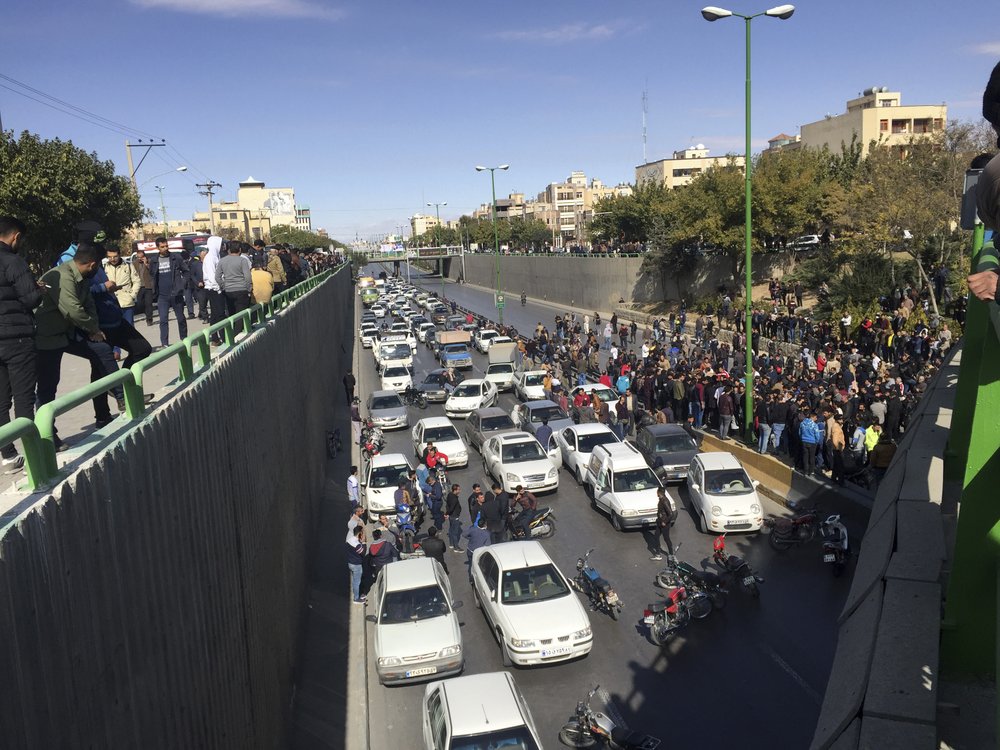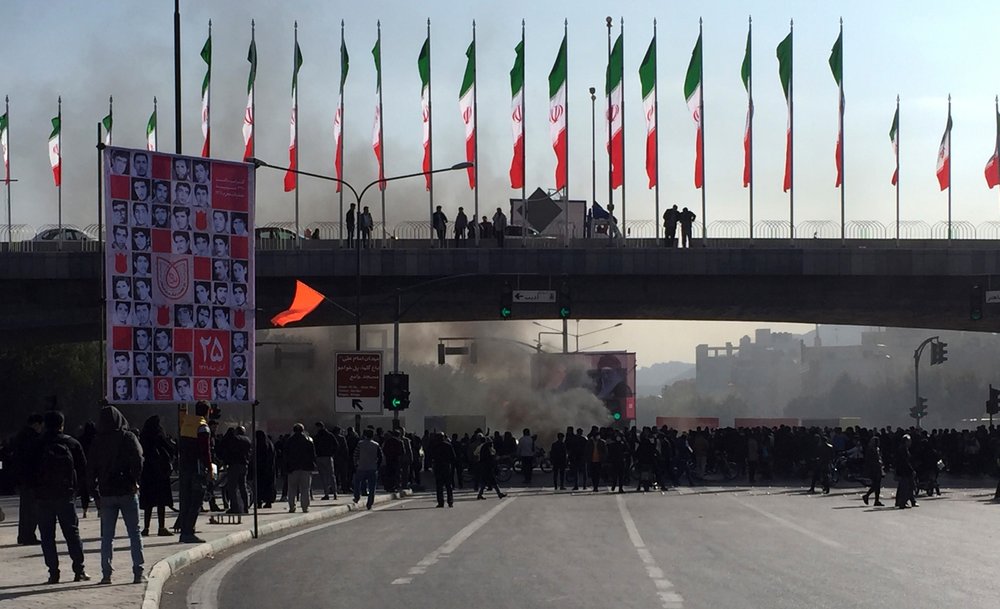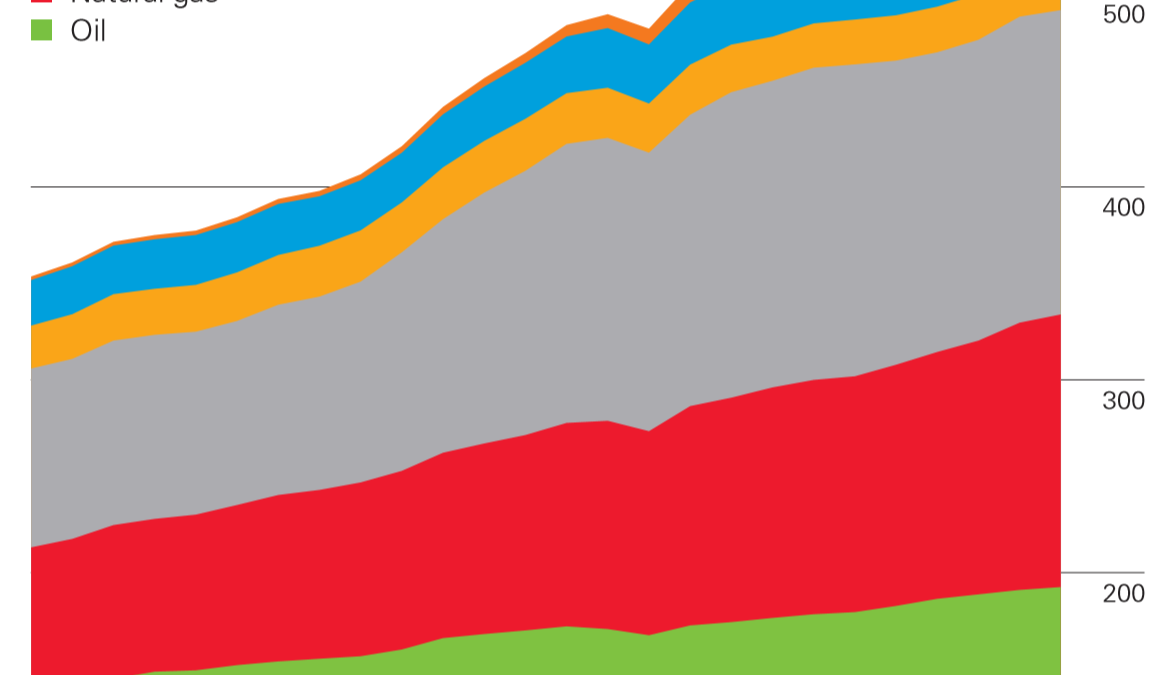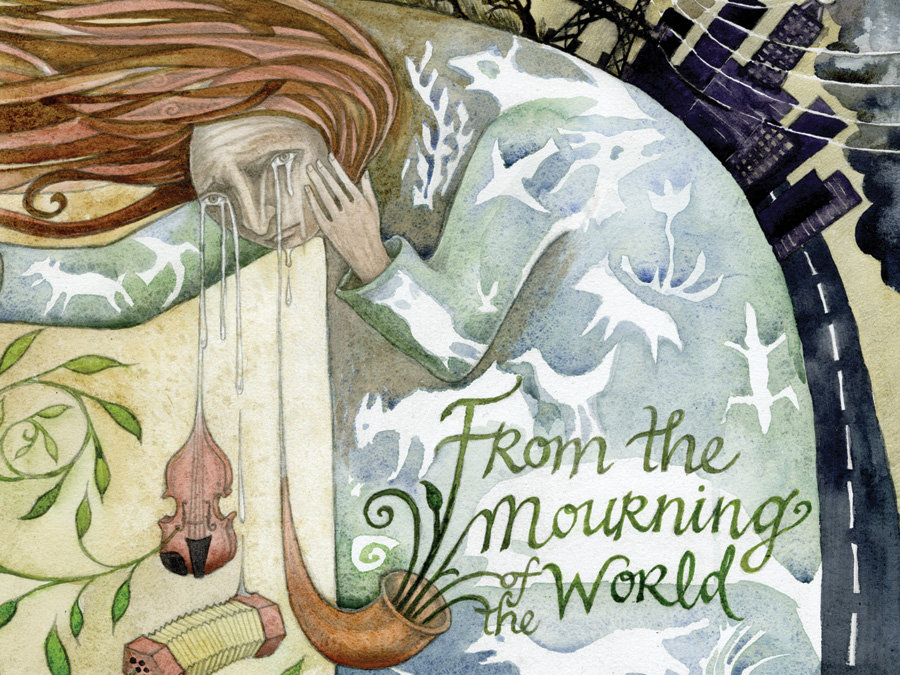Protests grip major Iran cities over gas prices – Internet access sees disruptions and outages – “The ongoing disruption is the most severe disconnection tracked in any country in terms of its technical complexity and breadth”

By Jon Gambrell
16 November 2019
DUBAI, United Arab Emirates (AP) – Protesters angered by Iran raising government-set gasoline prices by 50 percent blocked traffic in major cities and occasionally clashed with police Saturday after a night of demonstrations punctuated by gunfire, in violence that reportedly killed at least one person.
The protests put renewed pressure on Iran’s government as it struggles to overcome the U.S. sanctions strangling the country after President Donald Trump unilaterally withdrew America from Tehran’s nuclear deal with world powers.
Though largely peaceful, demonstrations devolved into violence in several instances, with online videos purporting to show police officers firing tear gas at protesters and mobs setting fires. While representing a political risk for President Hassan Rouhani ahead of February parliamentary elections, it also shows the widespread anger among Iran’s 80 million people who have seen their savings evaporate amid scarce jobs and the national rial currency’s collapse.
The demonstrations took place in over a dozen cities in the hours following Rouhani’s decision early Friday to cut gasoline subsidies to fund handouts for Iran’s poor. Gasoline in the country still remains among the cheapest in the world, with the new prices jumping up to a minimum of 15,000 rials per liter of gas — 50 percent up from the day before. That’s 13 cents a liter, or about 50 cents a gallon. A gallon of regular gasoline in the U.S. costs $2.60 by comparison.
But in a nation where many get by as informal taxi drivers, cheap gasoline is considered a birthright. Iran is home to the world’s fourth-largest crude oil reserves. While expected for months, the decision still caught many by surprise and sparked immediate demonstrations overnight.

Violence broke out Friday night in Sirjan, a city some 800 kilometers (500 miles) southeast of Tehran. The state-run IRNA news agency said “protesters tried to set fire to the oil depot, but they were stopped by police.” It did not elaborate, but online videos circulating on Iranian social media purported to show a fire at the depot as sirens wailed in the background. Another showed a large crowd shouting: “Rouhani, shame on you! Leave the country alone!”
Mohammad Mahmoudabadi, an Interior Ministry official in Sirjan, later told state television that police and demonstrators exchanged gunfire, wounding several. He said many protestors were peaceful, but later masked men armed with guns and knives infiltrated the demonstration. […]
Iranian internet access meanwhile saw disruptions and outages Friday night into Saturday, according to the group NetBlocks, which monitors worldwide internet access. By Saturday night, “real-time network data show connectivity has fallen to just 7 percent of ordinary levels following 12 hours of progressive network disconnections as public protests have continued across the country,” NetBlocks said.
“The ongoing disruption is the most severe recorded in Iran since President Rouhani came to power, and the most severe disconnection tracked by NetBlocks in any country in terms of its technical complexity and breadth,” the group said. The websites of state media outlets appeared affected by the outage early Sunday. [more]


